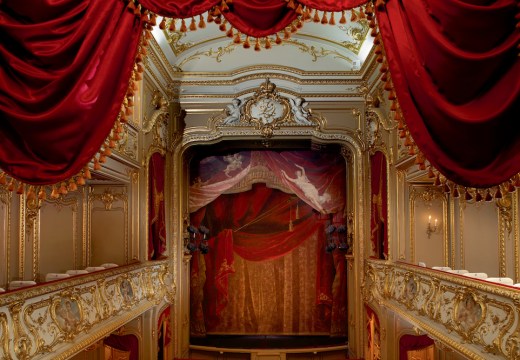Few are the careers which begin under Joseph Stalin and end with Covid-19. Irina Antonova, who has died at the age of 98 from complications arising from the virus, joined the staff of the Pushkin Museum of Fine Arts in Moscow in 1945. Appointed director by Stalin’s successor, Nikita Khrushchev, in 1961, she held that post for the next 52 years – a tenure unparalleled by any major museum director in the world.
The curatorial coups that Antonova pulled off during that tumultuous half-century are legendary, defying the polarities of the Cold War and gladdening millions of Russians hungry for knowledge of cultural life in the West. In 1956, just three years after Stalin died, she displayed the work of no less an iconoclast than Picasso. ‘Treasures of Tutankhamun’, masterminded by the British Museum, travelled to the Pushkin Museum in 1973, breaching the Iron Curtain in a collaboration that set the standard for Antonova’s determined international partnerships. The following year, hundreds of thousands of visitors queued for hours to see the Mona Lisa installed in the museum behind bulletproof glass. However flamboyant the spectacle, these exhibitions offered more than an encounter with acknowledged masterpieces. In ‘Moscow–Paris: 1900–1930’ (1982), the works of Picasso and Matisse mingled with those of Kandinsky and Malevich in ways which simultaneously cast a spotlight on avant-garde artists who had become personae non gratae after the Revolution and challenged the narratives of Russian exceptionalism which Soviet cultural policy enforced.

Irina Antonova with the Mona Lisa at the Pushkin Museum in 1974. Courtesy the Pushkin State Museum of Fine Arts, Moscow
For all these transnational perspectives, Antonova’s patriotism was fierce. Never was this more evident than in 1995, when the Pushkin Museum, along with the Hermitage in St Petersburg, revealed a cache of paintings by iconic modern artists (Renoir, Degas, Van Gogh) that were long believed to have been lost to the ravages of the Second World War. In fact, they had been seized in Germany by the Red Army and sequestered in the bowels of the two museums for four decades. For students of Russia’s cultural politics, as arresting as the artworks was the revelation of a photograph of Antonova as a twenty-something novitiate at the Pushkin Museum, unloading the precious pictures from lorries as they arrived.

The unloading of paintings taken from Dresden in 1945. Courtesy the Pushkin State Museum of Fine Arts, Moscow
Described in the New York Times as ‘the last prisoners of World War II’, the paintings were unveiled to an incredulous public in Moscow and St Petersburg, with Antonova stealing a march on her Hermitage counterpart by fast-tracking clandestine preparations and opening her show a month before his. But whereas the Hermitage opted for the innocuous title of ‘Hidden Treasures Revealed’, Antonova displayed her trove under the banner ‘Twice Saved’ – first from the upheavals of post-war Germany, and then thanks to the expertise of Russian conservators. Few who were present at the press conference will forget the vehemence with which she dismissed the case for restitution. Her intransigence echoed the mood of a country still traumatised by the cultural depredations as well as the irreparable human cost of the Nazi invasion. Antonova’s resolution may equally have reflected her memories of seeing the burning of the Reichstag while spending four years as a child in Berlin, or her experience nursing desperately injured Soviet pilots during the war. ‘What fascist Germany did to our national heritage […] demands compensation,’ the pugnacious director maintained.

Visitors in 1955 waiting to see the exhibition ‘Masterpieces of the Dresden Picture Gallery’. Courtesy the Pushkin State Museum of Fine Arts, Moscow
Fluent in several languages and with an energy which defied description, Antonova had a canny ability to move with the times, segueing effortlessly from scholarly publications to appearances on popular documentaries and television shows. Her eye for a photo opportunity put the selfie-loving generation some 75 years her junior to shame, whether it be posing in companionable conversation with Marc Chagall in 1973 or alongside Mikhail Gorbachev in one of her final public appearances in October 2020. Topping it all was her decision, at the age of 85, to clamber aboard a motorcycle behind Jeremy Irons to promote an exhibition of American art. Their photoshoot complete, he took her for a spin.

Irina Antonova with Marc Chagall in 1973. Courtesy the Pushkin State Museum of Fine Arts, Moscow
Antonova stepped down as director of the Pushkin Museum in 2013, allegedly prompted by Putin’s displeasure at her proposal to reunite Sergei Shchukin and Ivan Morozov’s pre-revolutionary collections of Impressionist and Post-Impressionist art in their own museum. She remained as president, ebulliently ignoring any suggestion that this was a largely honorific and ceremonial role. Instead, Madame Antonova, as she had been known for decades, continued to campaign for her favoured projects, among them the Pushkin’s relentless colonisation of neighbouring buildings. With a unique sense of theatre and showmanship, she could inspire awe in visiting museum directors even as her centenary approached, leaving them waiting just long enough before a meeting to feel a frisson of anticipation before this impeccably dressed lady with her trademark coiffure sailed through the door. Bedecked with prizes and honours, she maintained an exhausting schedule of international travel and speaking engagements which only the purdah imposed by the pandemic brought to an end. Her burial in the Novodevichy Cemetery in Moscow, the final resting place of such luminaries as Gogol and Chekhov as well as Khrushchev, attests to her esteemed position in Russia’s cultural heart.
Unlimited access from just $16 every 3 months
Subscribe to get unlimited and exclusive access to the top art stories, interviews and exhibition reviews.














![Masterpiece [Re]discovery 2022. Photo: Ben Fisher Photography, courtesy of Masterpiece London](http://www.apollo-magazine.com/wp-content/uploads/2022/07/MPL2022_4263.jpg)
It’s time for the government of London to return to its rightful home